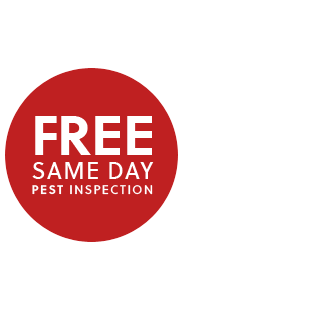Signs your home may have drywood termites
When termites display their destructive behavior by damaging wood in and around your home, it’s easy to assume the offender is the subterranean termite – a cryptic pest that lurks in the soil underneath your home.
There’s another termite, however, that doesn’t get down and dirty, but still poses a significant threat to many California homes: the drywood termite.
Drywood termites live above ground in the exterior-facing wood in and around your home. The flying adults – called swarmers – can be seen on the exterior of a home, but for the most part, drywood termites are obscure insects that are difficult to detect.
Clark, your friendly pest control, termite, mosquito, and lawn care expert, says that western drywood termites are mostly found in coastal areas of California. Drywood termites will colonize in attics where temperatures may exceed 131 degrees Fahrenheit. There, they locate their colonies in wood with more favorable temperatures, such as in ceiling joists that have bottom sides cooled by air conditioning.
Drywood termites live deep inside wood. Except during swarming season in late summer and early fall, or when repair work is being done on infested homes, they are seldom seen. Their colonies are smaller in size – usually fewer than 1,000 termites – than the more commonly encountered subterranean termite colony, which can have thousands of members.
Drywood termites can be widely dispersed in a home, and their colonies can take years to mature. They excavate small tunnels into the wood, close the tunnel openings behind them, and create a hollowed-out chamber that depletes the wood’s structural integrity. They can stay dormant for extended periods of time, over a year, re-emerging stronger and hungrier than ever.
Signs of drywood termites
Drywood termites are creatures of habit, and will re-infest the exact same location in a home to cause further damage. What are the signs your home could have drywood termites?
- Large numbers of flying insects on the exterior (and sometimes on the interior) of your home that appear to be focused on the wood
- Discarded wings on windowsills, or you notice flying termites around the exterior your home
- Hollow-sounding or visibly damaged wood that is honeycombed or carved out: If you can easily make a hole with a pocketknife or flat-blade screwdriver in the wood, it might have drywood termite damage.
- Unexplained piles of what looks like coarse grains of sand, which are termite fecal pellets sifted out of wood by the drywood termites
It takes a well-trained termite inspector to know where to look for drywood termite activity in a structure, correctly analyze the findings, assess whether treatment is needed, and recommend a treatment that will be most effective.
Drywood termite treatments are often categorized as either whole structure or localized. Whole-structure treatments are defined as the simultaneous treatment of all infestations, accessible and inaccessible, in a structure, for example via tented fumigation. Localized or spot treatments are more restrictive, and often are applied to a single board or small group of boards.
For maximum protection against termites, you should inquire about Clark Pest Control’s exclusive Termite Infestation Protection (T.I.P.) program, which is designed to cover your home from future infestations and damages caused by all species of termites.
Got questions about drywood termites? Call Clark
Call or text California’s trusted, friendly pest control expert at (800) WE-NEED-YOU (936-3339) or email us at clarkcares@clarkpest.com to schedule your home wellness inspection and get ahead of drywood termite and other pest issues.
Until next time, the pest management professionals at Clark Pest Controlthank you for helping to keep unwanted pests out of your home and yard.


